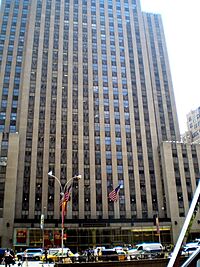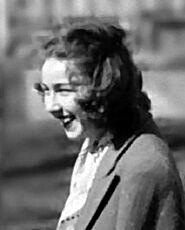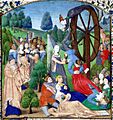John Kennedy Toole facts for kids
Quick facts for kids
John Kennedy Toole
|
|
|---|---|
 |
|
| Born | December 17, 1937 New Orleans, Louisiana, U.S. |
| Died | March 26, 1969 (aged 31) Biloxi, Mississippi, U.S. |
| Occupation |
|
| Education | Tulane University (BA) Columbia University |
| Notable works | A Confederacy of Dunces (1980) |
| Notable awards | Pulitzer Prize (1981) |
John Kennedy Toole (/ˈtuːl/; December 17, 1937 – March 26, 1969) was an American writer from New Orleans, Louisiana. He is famous for his novel, A Confederacy of Dunces. This book won the Pulitzer Prize for Fiction in 1981, but it was published after he passed away. He also wrote another book called The Neon Bible.
Even though many people thought his writing was excellent, Toole's books were not published during his lifetime. This was very hard for him. He struggled with sadness and feelings of being watched. He passed away at the age of 31.
Toole grew up in a middle-class family in New Orleans. His mother, Thelma, taught him to love culture from a young age. She was very involved in his life. When he was 10, he started performing on stage, doing funny impressions and acting. At 16, he wrote his first novel, The Neon Bible. He later thought it was not very good.
Toole earned a scholarship to Tulane University in New Orleans. After college, he studied English at Columbia University in New York. He also taught at Hunter College and other schools in Louisiana. His studies were paused when he joined the army. He taught English to Spanish-speaking soldiers in San Juan, Puerto Rico. While in the army, he started writing A Confederacy of Dunces. He finished it after he left the army.
Toole sent Dunces to a publisher, where editor Robert Gottlieb read it. Gottlieb thought Toole was talented. But he felt the funny novel didn't have a clear point. Even after Toole made changes, Gottlieb was not happy. After another rejection, Toole put the book aside. He struggled with sadness and feelings of being watched. Toole left home and traveled. His life ended early in Biloxi, Mississippi. Years later, his mother showed the book to writer Walker Percy. Percy helped get the book published. In 1981, Toole won the Pulitzer Prize for Fiction after his death.
Early Life and Growing Up
John Kennedy Toole was born to John Dewey Toole, Jr. and Thelma Ducoing Toole. His mother's grandmother was named Kennedy. The Ducoing family came to Louisiana from France in the early 1800s. The Toole family came from Ireland during the Great Famine in the 1840s.
Toole's father sold cars. His mother had to stop teaching when she married, as was common then. Instead, she gave private lessons in music, speech, and drama. Friends and family called Toole "Ken" for most of his life. He later asked to be called John.
Toole's mother was very cultured and controlling, especially with him. His father was less involved. But he and John bonded over baseball and cars. Toole's mother chose his friends. She thought his cousins were not good enough for him.
Toole was a very good student. He wanted to do well in school from a young age. He skipped two grades in elementary school.
When Toole was ten, his mother started a group of child performers. She called them the Junior Variety Performers. Toole was the star of this group of 50 children. He also acted in plays, hosted a radio show, and modeled for ads. He even had a solo comedy show.
In high school (Alcée Fortier High), Toole focused on his studies. He wrote for the school newspaper and yearbook. He won many essay contests. He also joined the debate team, like his father. Toole spoke at community groups. His father bought him a car, and he delivered newspapers at 13. The legal driving age was 15.
Toole spent a lot of time at his classmate Larry McGee's house. He dated Larry's sister, Jane. Jane said Toole never wanted to go home. He spent almost all his free time with the McGees. They played pranks and went on double dates. They swam at the local pool or drove around in Toole's car.
In 1954, as a teenager, Toole took his first trip outside Louisiana. He visited Philadelphia, New York City, and Washington, D.C.. He loved New York the most. He kept a scrapbook with pictures from his trip. It included rides on the subway, a boat trip in the harbor, and visits to the Statue of Liberty and Times Square.
Toole became the editor of his school newspaper's news section. He kept high grades throughout high school. He won many awards. These included a National Merit Scholarship and being named the Most Intelligent Senior Boy. He also received a full scholarship to Tulane University at age 17.
During his last year of high school, Toole wrote The Neon Bible. This was a short novel with a Southern Gothic style. It was similar to the writing of Flannery O'Connor, one of Toole's favorite authors. The story is about a boy named David. He lives in a poor, small town in 1940s Mississippi.
Toole later said the book was "grim" and "adolescent." He wrote it when he was 16. He sent it to publishers, but it was not accepted. The Neon Bible was published only after Toole's death.
College and Teaching Career
At Tulane, Toole first studied engineering because his father suggested it. But after a few weeks, he switched to English. He told his mother he was "losing his culture." Toole also worked on the college newspaper, the Hullabaloo. He wrote articles, reviewed books, and drew cartoons. His cartoons were known for being clever.
Around this time, Toole spent time with a local blues band. They played in the French Quarter and Irish Channel. Toole's friends and family looked down on these areas. So, he kept his visits a secret. His closest friend was guitarist Don Stevens, nicknamed "Steve Cha-Cha." They both loved blues music and Beat poets. Toole sometimes helped Stevens by pushing a hot tamale cart. He loved eating the tamales.
Toole later used these experiences in A Confederacy of Dunces. The main character, Ignatius J. Reilly, pushes a hot dog cart. Toole also worked at a family business that made men's clothing. He watched the business dealings closely. He used these observations to create the Levy Pants Company in his novel.

In 1958, Toole graduated from Tulane with honors. He went to Columbia University in New York to study English literature. He worked hard to get his master's degree in one year. In his free time, he dated Ruth Kathmann, a student from Tulane. They went dancing at the Roseland Ballroom. The $2.00 entrance fee let them dance all night, which fit their budget. Toole was a very good dancer.
Toole returned home in 1959. He became an assistant professor of English at the University of Southwestern Louisiana (USL). This school is now called the University of Louisiana at Lafayette. A close friend said Toole was great at making people laugh. He could imitate others and had a sharp sense of humor. This year was one of the happiest times in his life.
Toole was very popular and went to many parties. People would ask him to perform. He would tell funny stories and jokes. He saved money to go back to Columbia for his Ph.D. His friends noticed he was careful with money. They made him pay for and host a party at his home. The party was a big success.
However, when Toole's mother visited, he became quiet and withdrawn. His friend Pat Rickels said his mother was very proud of him. She believed he was perfect and had all the world's hopes on him. This was a heavy burden for him.
At USL, Toole met Bob Byrne, an English professor. Byrne is thought to be one of the main inspirations for Ignatius J. Reilly. Byrne studied the medieval period. He and Toole often talked about the philosopher Boethius and the wheel of Fortuna. Boethius was Ignatius J. Reilly's favorite philosopher. Like Ignatius, Byrne was a bit messy and played the lute. He also wore a deerstalker hat, which Toole often teased him about.
When he wasn't studying or at parties, Toole went to country bars and drank beer. He loved singer Frances Faye. He was also a big fan of Marilyn Monroe. He was very sad when she died.
In May 1960, Toole accepted a fellowship to study at the University of Washington at Seattle. But he chose to teach at Hunter College in New York instead. This allowed him to study at Columbia. At 22, he became the youngest professor in Hunter's history. He found the students at Hunter amusing. His friend Fletcher thought the character of Myrna Minkoff in Dunces was based on these students.
Military Service and Writing Dunces
Toole's studies were stopped when he was drafted into the United States Army in 1961. He served two years at Fort Buchanan in Puerto Rico. He taught English to soldiers who spoke Spanish. Toole spoke Spanish fluently. He quickly moved up in the army ranks. In less than a year, he became a sergeant. He received many awards.
While in Puerto Rico, he traveled around the Caribbean. Toole started to dislike army life and the heat in Puerto Rico. He wrote to a friend that he was busy with English programs. He also said he had a lot of control over people and matters. He felt he might become a "mad tyrant" from his work.
Toole wanted a private office in the army. Privacy was rare on the island. Some soldiers rented hotel rooms for quiet time. Toole's army friend, David Kubach, lent him a typewriter. The barracks were full of college-educated English professors. This was different from most army companies.
Toole became more withdrawn. He spent more and more time in his office. He was typing what would become A Confederacy of Dunces. His fellow soldiers could often hear the typewriter keys late at night. Toole showed parts of his book to Kubach, who liked it. Kubach was transferred and took his typewriter. Toole had to buy his own. He later said he started to "talk and act like Ignatius" as he wrote the book.
Finishing Dunces and Its Challenges
Toole received a special discharge from the army. His parents were having money problems. His father was struggling with hearing loss and increasing fear. Toole was excited to go home and talk with his mother. He turned down a job offer at Hunter. He came home to teach at Dominican College, an all-female Catholic school.
He liked the job because he only taught 10.5 hours a week. This gave him free time, like in the army. He used his free time to work on his novel. He also spent time with his musician friend Sidney Snow. They went to night clubs where Snow's band played songs by The Beatles.
The assassination of John F. Kennedy in November 1963 made Toole very sad. In February 1964, he started writing again. He added an ending to his book and sent the manuscript to Simon & Schuster.
Dunces is a "grand comic fugue." It is considered an important book in 20th-century Southern literature. It is praised for using different New Orleans accents correctly. The story is about Ignatius J. Reilly. He is a lazy, overweight, self-proclaimed philosopher who lives with his mother. After Ignatius causes a financial problem for his family, his mother makes him get jobs. He is always upset about this. He tries to get back at businesses he feels have wronged him. He also encourages black workers to rebel at the Levy Pants Company.
Along the way, he meets many different characters. One is Myrna Minkoff, a rebellious intellectual. They write letters to each other. Ignatius is partly based on Toole's friend Bob Byrne. But Byrne and others said that much of Ignatius is actually based on Toole himself.
Ken Toole was a strange person. He was outgoing and private. And that's very difficult. He had a strong ... desire to be recognized. ... but also a strong sense of alienation. That's what you have in Ignatius Reilly.
The book reached senior editor Robert Gottlieb. Gottlieb had helped writer Joseph Heller finish Catch-22. Gottlieb and Toole wrote letters and talked about the novel for two years. This ended in disappointment for both. Gottlieb thought Toole was talented. But he was not happy with the book as it was. He felt it had one main problem. He told Toole that the story needed a "real point," not just funny parts that were tied together at the end.

At first, Toole was sad the book couldn't be published right away. But he was happy that a major publisher was interested. He started his second year of teaching at Dominican. He was a favorite new professor. Students loved his humor. He would make whole classes laugh without showing much emotion himself. He never repeated a story or joke.
In late 1964, Toole got a letter from Gottlieb. Gottlieb said he had shown the novel to Candida Donadio, a literary agent. She worked with famous writers. Gottlieb told Toole they thought he was "wildly funny." They liked and disliked the same parts of the book. Gottlieb listed what he didn't like. He said that even with all its good parts, the book "isn't really about anything." He said this was something no one could fix.
Gottlieb said he still believed in Toole as a writer. He wanted to keep the manuscript in case they could find a solution. Toole decided it was best for Gottlieb to return the book. He said he couldn't do much more to it. Toole went to New York to see Gottlieb. But Gottlieb was out of town. Toole felt embarrassed. He returned home and left a note for Gottlieb to call him. They talked on the phone for an hour. Gottlieb repeated that he would not accept the novel without more changes. He suggested Toole write something else. Toole refused this idea.
In a long letter to Gottlieb in March 1965, Toole explained why he couldn't give up on the book. He wrote it from his own observations. The characters were based on real people he had seen.
I don't want to throw these characters away. In other words, I'm going to work on the book again. I haven't been able to look at the manuscript since I got it back, but since something of my soul is in the thing, I can't let it rot without trying.
Gottlieb wrote an encouraging letter back. He said again that Toole was very talented. He said he would keep reading, editing, and perhaps publishing the book. In early 1966, Toole sent Gottlieb one last letter. Gottlieb wrote back on January 17, 1966. He repeated his thoughts on the book. He said he wanted to read it again when Toole made more changes.
Later Years and Struggles

Toole took the rejection of his book very hard. He stopped working on Dunces and left it in his bedroom. He continued to teach at Dominican. His classes were always full because students loved him. His funny performances during lectures were still popular.
He tried to write another novel called The Conqueror Worm. This name came from a poem by Edgar Allan Poe about death. But Toole found little peace at home. His mother convinced him to show Dunces to Hodding Carter Jr.. Carter was a well-known reporter and publisher. Carter showed little interest in the book. This face-to-face rejection made Toole even more sad. He became angry with his mother for causing him more embarrassment.
Except for a few trips to Madison, Wisconsin to see his army friend David Kubach, Toole spent most of his last three years at home or at Dominican. In 1967, Kubach visited Toole. He noticed Toole seemed more fearful. Once, while driving in New Orleans, Toole thought they were being followed.

The family moved to a bigger rental house. Toole kept teaching. His students noticed his humor became sharper. He gained a lot of weight and had to buy new clothes. Toole started having frequent, bad headaches. He saw a doctor, but the treatment didn't help. The doctor suggested he see a brain specialist, but Toole refused.
Toole tried to keep things normal. He enrolled at Tulane in the fall of 1968 to get a Ph.D. He was interested in writer Theodore Dreiser's close relationship with his mother. The deaths of Robert F. Kennedy and Martin Luther King Jr. in 1968 added to his sadness. Several of Toole's friends noticed he felt more and more like people were against him.
In August 1968, Toole visited his friend Bob Byrne. He again expressed sadness that his book wouldn't be published. Toole told Byrne that people were honking their car horns at his house late at night. He also said students whispered about him and people were plotting against him. Byrne talked with him and felt he calmed down for a while.
In the months before his death, Toole, who was usually very neat, started appearing in public unshaved and uncombed. His shoes were unpolished, and his clothes were wrinkled. This surprised his friends and students. He also started showing signs of fear. He told friends that a woman was trying to steal his book.
Toole became more unpredictable during his lectures at Dominican. Students often complained. He would rant about church and state. Near the end of 1968, he had to take time off from teaching. He also stopped going to classes at Tulane. The Toole family had a difficult Christmas in 1968. Toole's father was becoming confused. Toole searched the house for hidden mind-reading devices.
His Passing
When Toole could not return to Dominican in January 1969, the school hired another professor. This upset his mother. On January 19, 1969, they had an argument. He stopped by the house the next day to pick up some things. He only spoke to his father, as his mother was out. He left home for the last time and took $1,500 from his savings.
After a week, his mother called the police. But without knowing where he was, they waited for him to appear. Thelma became convinced that Toole's friends knew where he was. She called them many times, even though they said they didn't know.

Items found in Toole's car showed he drove to California. He visited Hearst Castle. Then he drove to Milledgeville, Georgia. Here, he likely tried to visit Andalusia, the home of writer Flannery O'Connor, who had passed away. Her house was not open to the public. After that, he drove toward New Orleans. During this trip, he stopped outside Biloxi, Mississippi. He passed away on March 26, 1969.
Books Published After His Death
After Toole's death, his mother, Thelma Toole, was very sad for two years. The manuscript for Dunces stayed in his old room. Then, she decided to find a publisher. She believed it would show her son's talent. Over five years, she sent it to seven publishers, but all of them said no. She said, "Each time it came back, I died a little."
However, in 1976, she learned that author Walker Percy was joining the faculty at Loyola University New Orleans. To get Percy to read the book, Thelma started calling and writing to him. Percy complained to his wife about a strange old woman trying to reach him. As Percy's time as a professor was ending, Thelma went to his office. She demanded he read the book.
Percy was hesitant at first. He agreed to read the book to stop her from bothering him. He admitted he hoped it would be so bad he could stop reading after a few pages. But he loved the book. He said in disbelief:
In this case I read on. And on. First with the sinking feeling that it was not bad enough to quit, then with a prickle of interest, then a growing excitement, and finally an incredulity; surely it was not possible that it was so good.
Even with Percy's admiration, getting the book published was hard. It took more than three years for it to be accepted. A Confederacy of Dunces was published by Louisiana State University Press in 1980. Percy wrote the introduction. Toole's first draft was published with very few changes. The first printing was only 2,500 copies. Some were sent to Hollywood, but the book didn't get much interest at first.
However, the novel became very popular in the literary world. A year later, in 1981, Toole was awarded the Pulitzer Prize for Fiction after his death. The book eventually sold over 1.5 million copies. It was translated into 18 languages. In 2019, the PBS show The Great American Read ranked Dunces as the 58th most loved book in America.
Toole's only other novel, The Neon Bible, was published in 1989. It was made into a movie in 1995. The movie did not do well at the box office and received mixed reviews.
In 2015, a play based on A Confederacy of Dunces opened in Boston. It starred Nick Offerman from the TV show Parks and Recreation. In 2016, a play called Mr. Toole, inspired by Toole's life, opened in New York City.
Thelma Toole's determination to publish A Confederacy of Dunces meant many copies of the manuscript were shared. This makes it hard to find the "original" one. Early versions of the manuscript are kept in the archives at Loyola University New Orleans and Tulane University.
Images for kids
-
Fortuna with the Wheel of Fortune from a medieval manuscript. Fortuna was a favorite subject of Toole's Dunces protagonist Ignatius J. Reilly.
See also
 In Spanish: John Kennedy Toole para niños
In Spanish: John Kennedy Toole para niños


